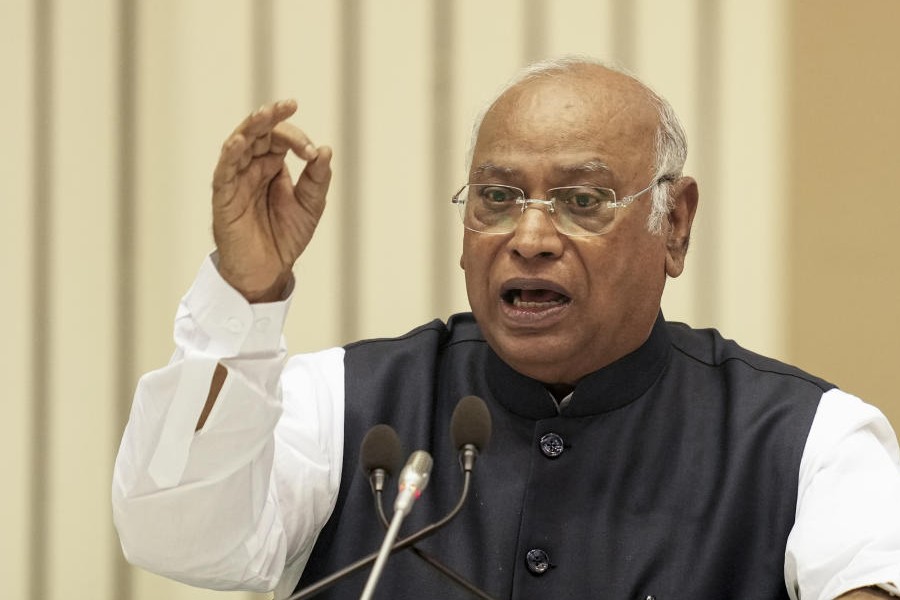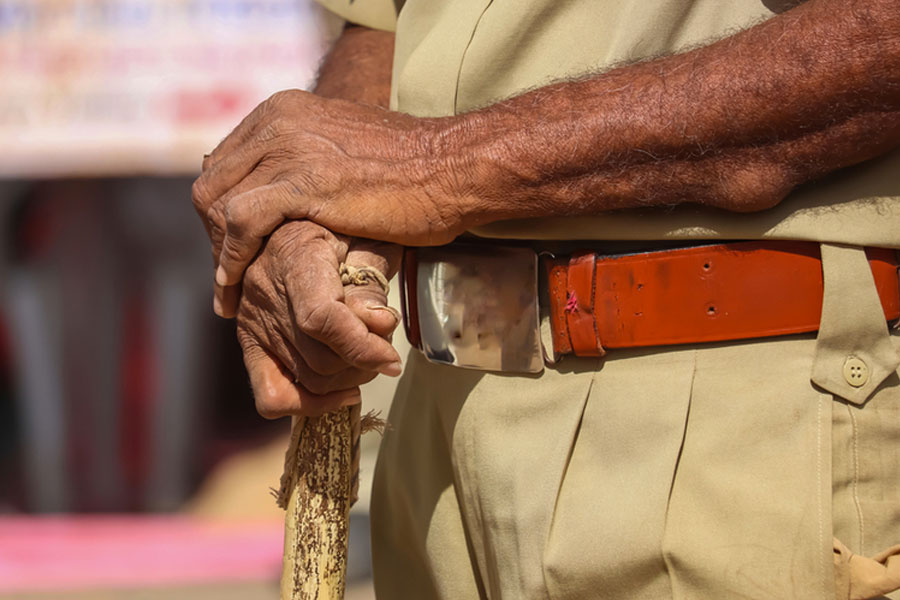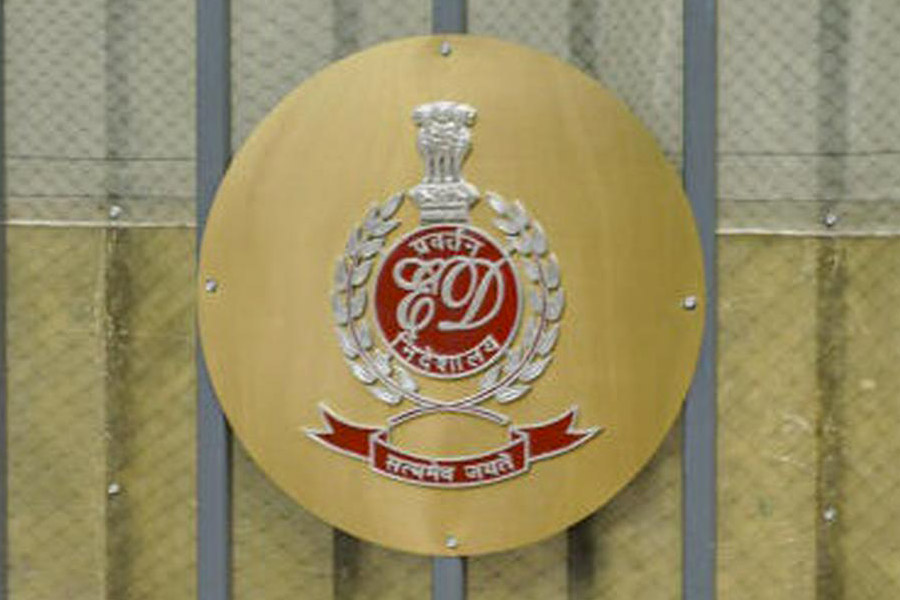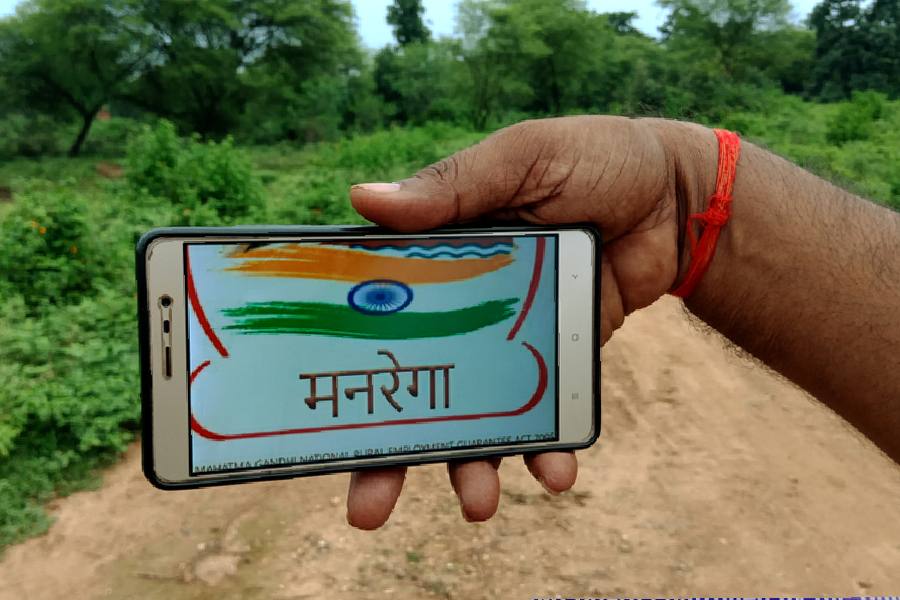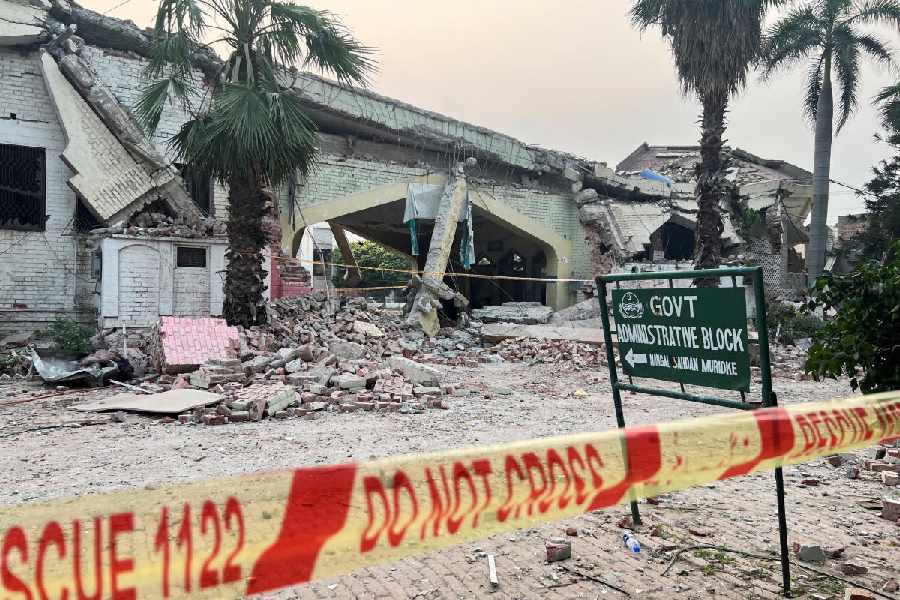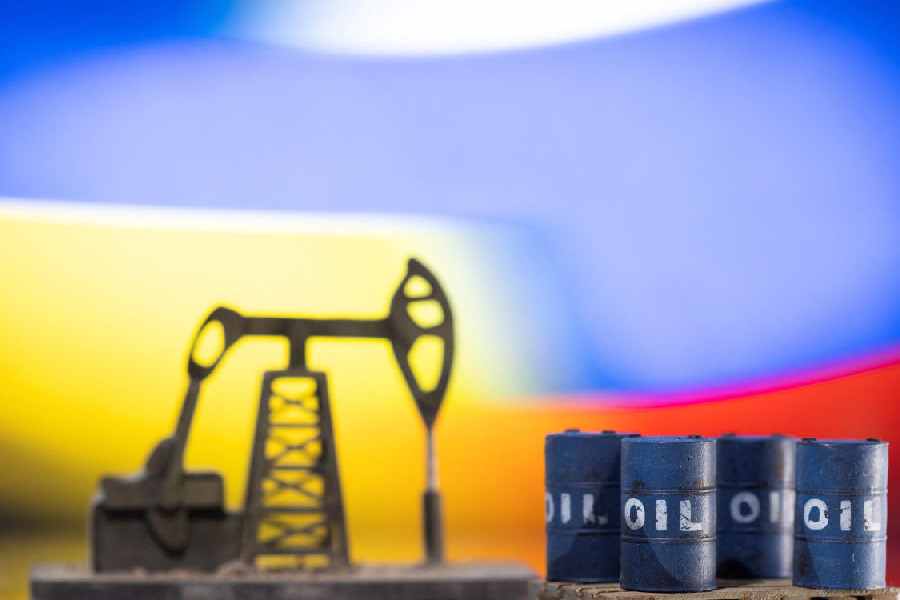 |
| A scene from Noder Nemai staged at Bankim Mela last year. Pictures by Anup Bhattacharya |
Though the jatra is about Nadia’s son, Noder Nemai has captured hearts in Howrah through generations and is the oldest-running jatra in the district. It is one of the few traditions that exclusively belongs to Howrah. Many of the older residents of the town have grown up watching this jatra in their locality or nearby places. Some hum the tune of Bole deye re Nodey basi when thinking about kirtans from the jatra, others sing along with the actors as they sing Bhojo Radha Krishna, still others weep while watching the actors being transformed to Nemai, Netai or other characters and perform with depth and devotion. Howrah Samaj regularly stages Noder Nemai at call shows, specially in the winter months, and the members have a busy schedule from the time after Durga puja. Noder Nemai has earned a name across West Bengal and the country and the group often travels to various other places to perform even today.
 |
| An old painting of a scene from Noder Nemai |
If Girish Ghosh was the father of Bengali theatre at the Calcutta stage, a younger but versatile and talented director ruled the Howrah stage in the early 1930s. Biswaranjan Chattopadhyay was a popular name among theatre lovers and the people of Howrah. Although he was not a playwright, Biswaranjan would adapt different types of plays written by well-known playwrights and direct them on the Howrah stage. “Despite his success and fame, Biswaranjan was an unhappy man. His wife and son both died early, leaving him a sad and broken man,” said Ashoke Banerjee, the secretary of Howrah Samaj. Biswaranjan formed Howrah Samaj in 1931 with some local youths. The same year during Durga puja, Biswaranjan dreamt of the goddess instructing him to perform Girish Ghosh’s play Chaitanya Leela. Biswaranjan did extensive research on the play, getting books from National Library and other libraries to get a detailed biography of Chaitanya Mahaprabhu. He made changes to the script, added more songs and prepared the script for Noder Nemai. The temple in central Howrah was also established by Biswaranjan after he dreamt of Chaitanya Mahaprabhu standing in front of Puri’s Jagannath temple holding on to a pillar. This is the figure that stands at the Chaitanya Mahaprabhu temple at Howrah Samaj, exactly as Biswaranjan had seen in his dream.
As the name suggests, Noder Nemai is based on the life of Chaitanya Mahaprabhu, a series of various episodes of his life. Biswaranjan’s original script had only a portion of Chaitanya’s life, that which he had spent at Nabadwip. Known as Nabadwip Leela, this the first part or pala of the jatra. Later, Biswaranjan added a sequel in which he included the second part of Chaitanya’s life, when he took sannyas. The songs of the jatra were written by Brajendranath Mukhopadhyay. With time, Howrah Samaj’s jatra gained popularity.
Huge crowds would gather to watch the play at the Howrah Samaj hall at Baikuntha Chatterjee Lane near Howrah Maidan. The group would also be called to perform at zamindar houses. “Tickets were sold at Rs 15 at that time which was quite expensive, yet there would be regular crowds coming to watch the shows everyday,” said Ashoke Banerjee.
 |
| The huge gallery at the Howrah Samaj temple in central Howrah where Noder Nemai and other jatras would be staged |
In course of time, many actors played the lead roles. Among the popular actors were Manindranath Chattopadhyay, who played Nemai and Hrishikesh Bandopadhyay played Netai from 1931 till 1964-65. “People talked about Manindranath and Hrishikesh’s acting. Many people from Calcutta would come to watch their performance. Devotees would often crowd around the stage after the jatra was over to touch Nemai and Netai’s feet. For them, they were gods. Hrishikesh Bandopadhyay was a remarkable singer and singers like Hemanta Mukherjee and Sabitabrata Dutta would say that he was an inspiration to them,” said Debprasad Chatterjee, a member of Howrah Samaj who also acts in the jatra.
Howrah Samaj is an all mens’ group, a tradition that it has maintained through the years. “We do not allow women to join the group, men act in female roles in our plays,” said Ashoke Banerjee, who plays Netai in the jatra. Nemai is played by Pradeep Banerjee.
The period between 1940-45 was a peak for the group. “There would be heavy bookings and we often refused shows. This trend continued till the 1960s,” said Debprasad. In 1984, during the 500th birth anniversary of Chaitanya Mahaprabhu, Howrah Samaj performed for 20 to 25 days at a stretch at various places.
The jatra culture in Howrah Samaj has not waned and younger boys from the families of the actors are coming forward to take part. “We generally give preference to boys from our own families because they are familiar with our style of acting. Sometimes we do have to take fresh talent. If they have no experience of stage acting, they are trained. Most importantly, they have to learn the songs and the style of singing kirtans,” said Ashoke Banerjee, who teaches singing to young members along with another member of the group.
 |
| Biswaranjan Chattopadhyay who formed Howrah Samaj |
At present there are 14 kirtans in the jatra. Over the years, the jatra has been edited to suit the time limit in programmes. “The original jatra is four-and-half hours long but now we have edited it to three-and-half hours, after removing some songs. We do not get such patient audiences like in old times. People cannot sit through the entire play,” said Banerjee. Apart from Noder Nemai, Howrah Samaj also performs plays like Brindaban Leela and Nasiram written by Girish Ghosh.
Bookings come well in advance for performances around the state and sometimes outside. “We get invitations during Durga puja. But because we have Durga puja at the Noder Nemai temple itself, we cannot accept the shows. Dol Jatra is also a big festival at our temple, so we accept shows in advance or after the festival,” said Banerjee. The team charges Rs 20,000 for a show anywhere in Howrah and Calcutta. “We have a 40-member team including actors, make-up artistes, musicians and others. The cost of travelling with such a huge team is also high. Outside the city, we charge more, depending on where we go,” said Banerjee.


